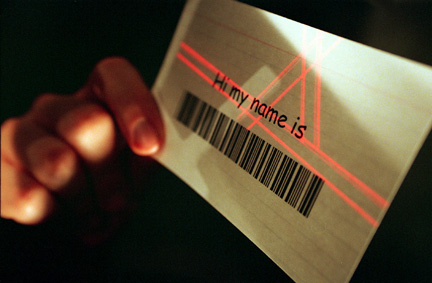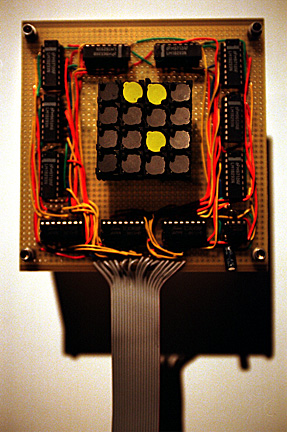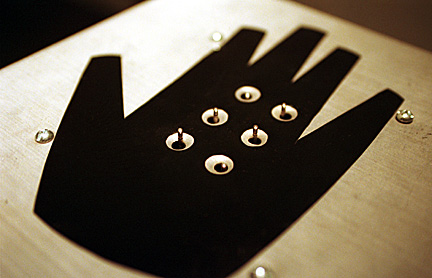opaque plays with our trust in the encoding of digital information. We invest considerable trust in objects like magnetic strips on credit cards and bar codes on products. Is that trust so well founded? As in our general experience, opaque is trustworthy most of the time and faithfully encodes a visitors name as a bar coded nametag. However, a significant number of barcodes are not trust worthy. The interactions between visitors with ‘good’ nametags and those with ‘flawed’ nametags are often amusing.
opaque consists of barcode generating software, a grocery store barcode scanner and an electronic pixel sign. The software encodes people's names to barcodes - sometimes with error. Using the generated barcode, a name label is printed. Users can then scan the printed nametag to display on the pixel board.

photo: S. Sinclair

